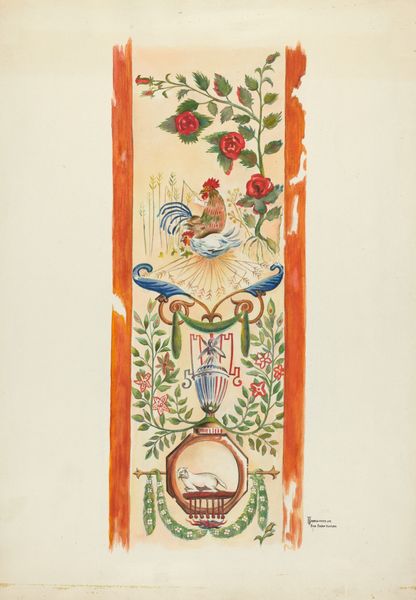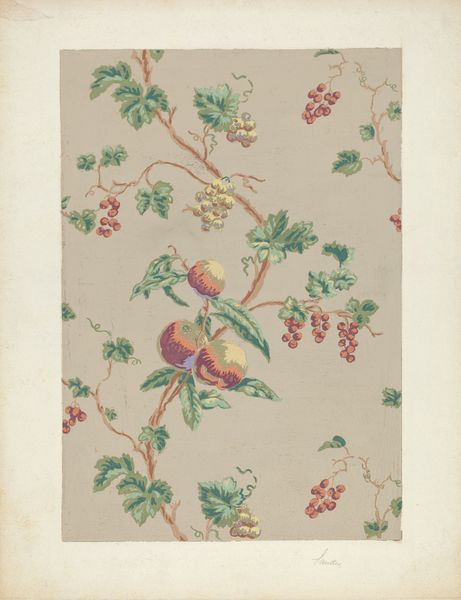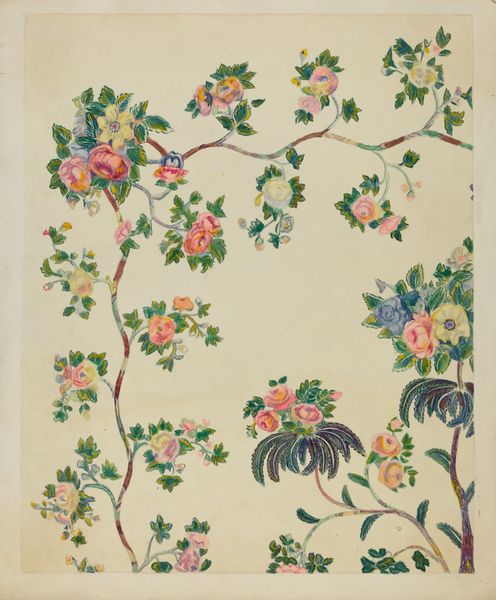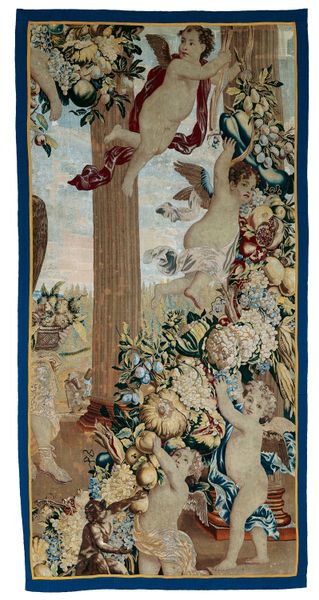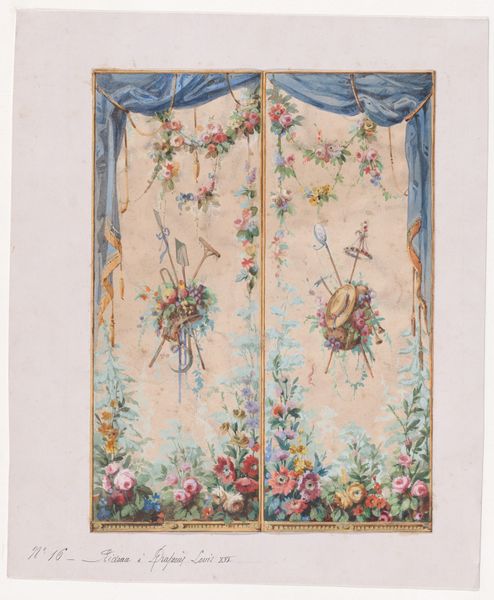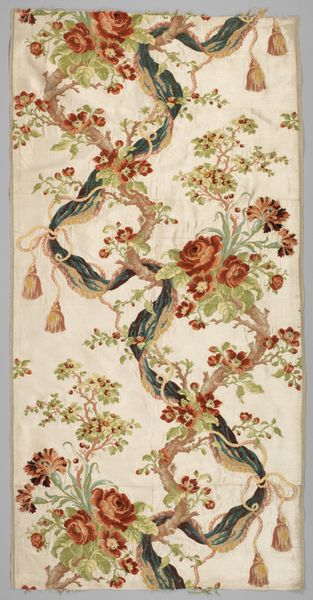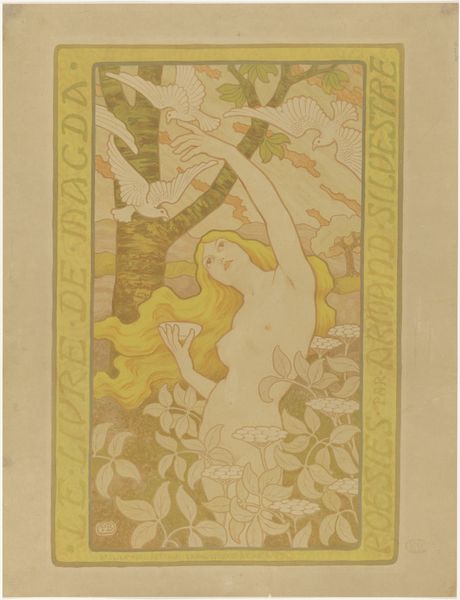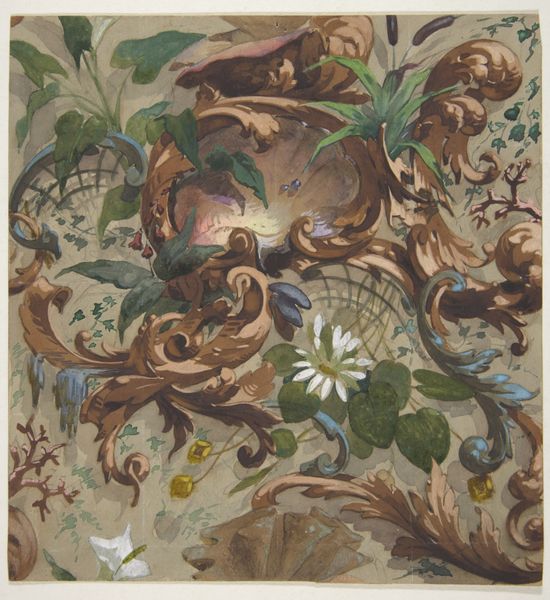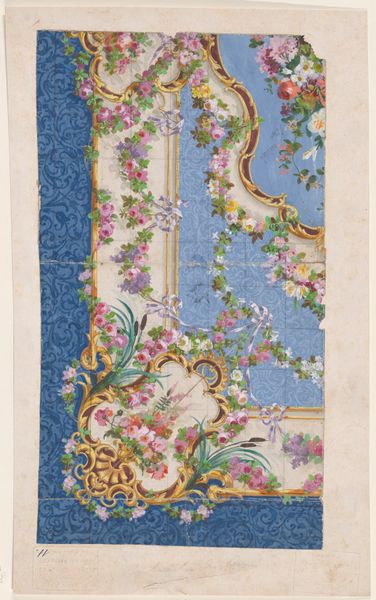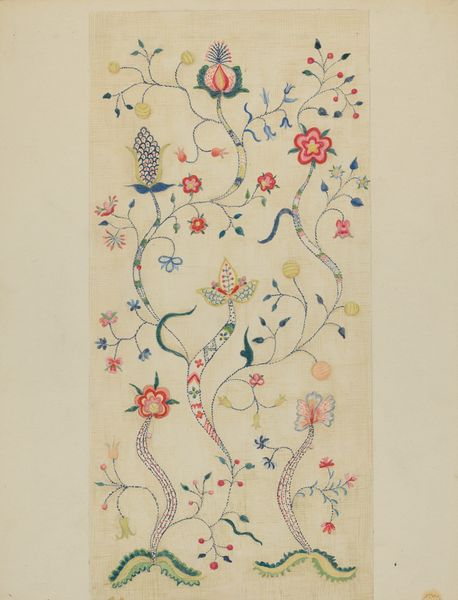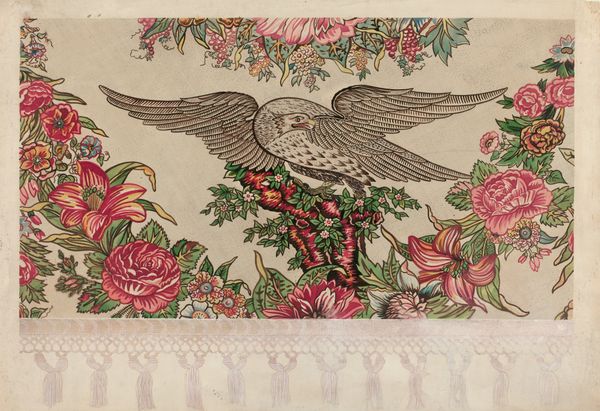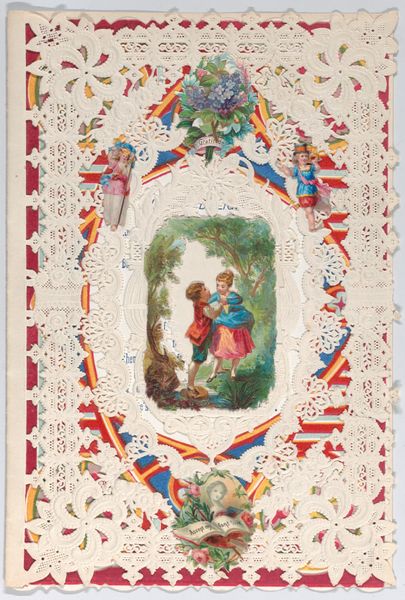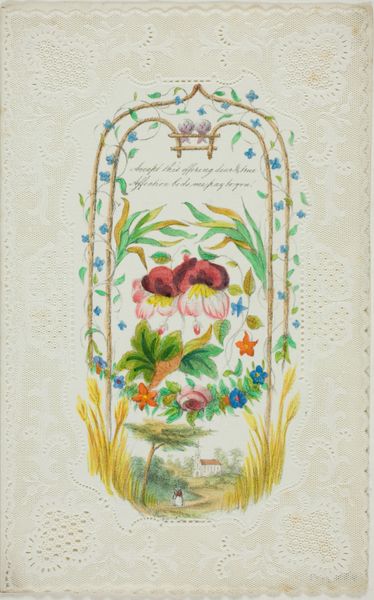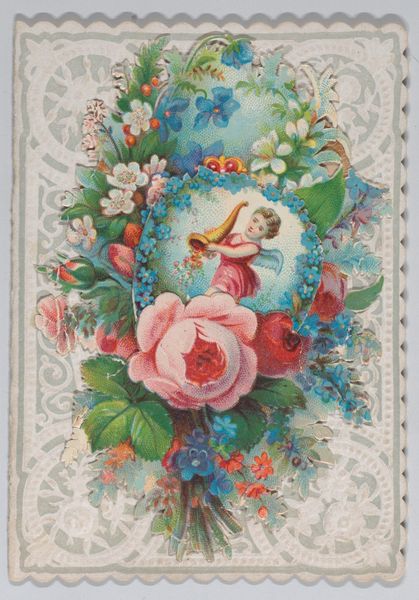
Design for Wallpaper or Panel (?) with an Orientalist Motif with Three Phoenix-Like Exotic Birds with Colorful Feathers and a Flowering Tree within an Ornamental Frame with Tassels Resembling a Tapestry 1870 - 1900
0:00
0:00
#
fantasy-art
#
orientalism
#
watercolour illustration
#
decorative-art
Dimensions: Sheet: 11 in. × 5 11/16 in. (27.9 × 14.5 cm)
Copyright: Public Domain
Editor: So, here we have a vibrant design for wallpaper or a panel from around 1870 to 1900, showing these incredibly fanciful, phoenix-like birds within an ornamental frame. It feels so rich in detail and pattern; almost overwhelming! How do you interpret this work? Curator: This piece speaks volumes about cultural fascination and appropriation. The "Orientalist Motif," as it's described, reflects the West's imaginative, often romanticized, vision of the East. Notice how the exotic birds – more fantasy than reality – and the stylized flowering tree become symbols, emptied and then re-filled with Western desires. Does the tapestry frame suggest anything to you? Editor: I guess it sort of "domesticates" the exotic imagery. Makes it something for the home. Curator: Precisely! The tapestry frame anchors this fantasy within a familiar Western context. It's like saying, "We can bring the allure of the East into our own spaces." These phoenix-like creatures aren't just birds; they embody rebirth, immortality, and a sense of wonder the West projected onto the East. But do we see understanding or appropriation here? Editor: I can definitely see how the symbolic richness of these images could be easily lost or misunderstood through appropriation. The exotic birds might just become decorative motifs without their deeper cultural meaning. Curator: Exactly! The beauty captivates, yes, but also obscures potentially problematic layers. It’s cultural memory filtered and reimagined, which brings both continuity and distortion. What do you make of the use of color here? Editor: I think the vibrant, almost fantastical color choices also contribute to that sense of romanticism and maybe even distance from any sort of cultural reality. It really gives a fantastical, dreamy feel. Curator: It does indeed. Understanding the symbolic weight of images helps us navigate the complex relationship between cultures, then and now. Editor: That's a great point; it gives a lot to think about! Thanks.
Comments
No comments
Be the first to comment and join the conversation on the ultimate creative platform.
